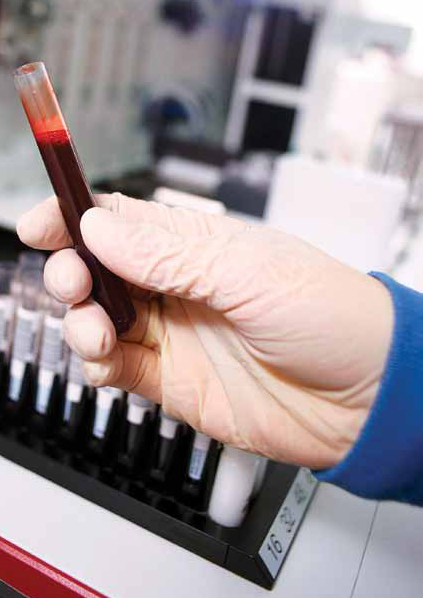LII:Laboratory Informatics Buyer's Guide for Medical Diagnostics and Research
Title: Laboratory Informatics Buyer's Guide for Medical Diagnostics and Research
Edition: 2022 Edition
Author for citation: Shawn E. Douglas and Alan Vaughan
License for content: Creative Commons Attribution-ShareAlike 4.0 International
Publication date: January 2022
Medical labs of all types—from the clinical diagnostics labs of the hospital to the clinical research labs of a medical device manufacturer—at their heart have an overall goal of doing their part towards improving health outcomes among humans and animals. On the surface, this goal sounds relatively mundane; however, the work conducted in these laboratories is anything but mundane. From the use of advanced clinical workflows to the requirement of accurate and timely results, these labs are under a lot of stress to operate effectively, efficiently, and according to regulations. However, well-designed laboratory informatics solutions, when implemented, used, and maintained effectively, provide a means to better achieve that primary goal.
This guide addresses the medical diagnostics and research laboratories in their myriad forms, as well as how laboratory informatics solutions can benefit them. Yet it's more than "here's a laboratory, here's a software system: marry the two, and the magic begins!" These systems have their own intricacies, and its up to laboratory personnel, often not well-versed in such automation solutions, to evaluate and implement them. This guide addresses the numerous considerations that should be made beforehand, and it provides several chapters of resources to help practically put those considerations to work. It also addresses the usefulness of a requirements specification and how to put it to use. In particular, a slightly modified version of LIMSpec is suggested to get the most out of developing and using any requirements specification as part of software and vendor selection.
The table of contents for Laboratory Informatics Buyer's Guide for Medical Diagnostics and Research is as follows:
- 1. Introduction to medical diagnostics and research laboratories
- 1.1 Medical diagnostics lab
- 1.1.1 Pathology
- 1.1.1.1 Anatomical vs. clinical pathology
- 1.1.1.2 Forensic pathology
- 1.1.2 Physician office lab
- 1.1.3 Integrative medicine lab
- 1.1.1 Pathology
- 1.2 Public health lab
- 1.3 Toxicology lab
- 1.4 Blood bank and transfusion lab
- 1.5 Central and contract research lab
- 1.5.1 Medical and other research in academia
- 1.6 Genetic diagnostics lab
- 1.6.1 Cytogenetics lab
- 1.7 Medical cannabis testing lab
- 1.1 Medical diagnostics lab
- 2. Choosing laboratory informatics software for your lab
- 2.1 Evaluation and selection
- 2.1.1 Technology considerations
- 2.1.1.1 Laboratory informatics options
- 2.1.2 Features and functions
- 2.1.3 Cybersecurity considerations
- 2.1.4 Regulatory compliance considerations
- 2.1.5 System flexibility
- 2.1.6 Cost considerations
- 2.1.1 Technology considerations
- 2.2 Implementation
- 2.2.1 Internal and external integrations
- 2.3 MSW, updates, and other contracted services
- 2.4 How a user requirements specification fits into the entire process (LIMSpec)
- 2.1 Evaluation and selection
- 3. Resources for selecting and implementing informatics solutions: Part 1: Laboratory informatics vendors
- 3.1 LIMS vendors
- 3.2 LIS vendors
- 3.3 ELN vendors
- 3.4 Middleware vendors
- 4. Resources for selecting and implementing informatics solutions: Part 2: Other vendors and service providers
- 4.1 Medical diagnostics instrumentation vendors
- 4.1.1 CLIA-certified vendors
- 4.1.2 Other vendors
- 4.2 EHR vendors
- 4.3 Laboratory business intelligence and workflow solution vendors
- 4.4 Laboratory billing service providers
- 4.5 Consultants
- 4.1 Medical diagnostics instrumentation vendors
- 5. Resources for selecting and implementing informatics solutions: Part 3: Industry and community resources
- 5.1 Trade organizations
- 5.2 Conferences and trade shows
- 5.3 User communities
- 5.4 Books and journals
- 5.5 Standards
- 5.6 Further reading
- 5.7 LIMSpec
- 6. Taking the next step
- 6.1 Conduct initial research into a specification document tailored to your lab's needs
- 6.2 Issue some of the specification as part of a request for information (RFI)
- 6.3 Respond to or open dialogue with vendors
- 6.3.1 The value of demonstrations
- 6.4 Finalize the requirements specification and choose a vendor
- Appendix 1. Blank LIMSpec template for medical diagnostics and research labs
- A1.1 Introduction and methodology
- A1.2 Primary Laboratory Workflow
- A1.3 Maintaining Laboratory Workflow and Operations
- A1.4 Specialty Laboratory Functions
- A1.5 Technology and Performance Improvements
- A1.6 Security and Integrity of Systems and Operations
- A1.7 Putting LIMSpec to Use
- A1.8 LIMSpec in Microsoft Word format










